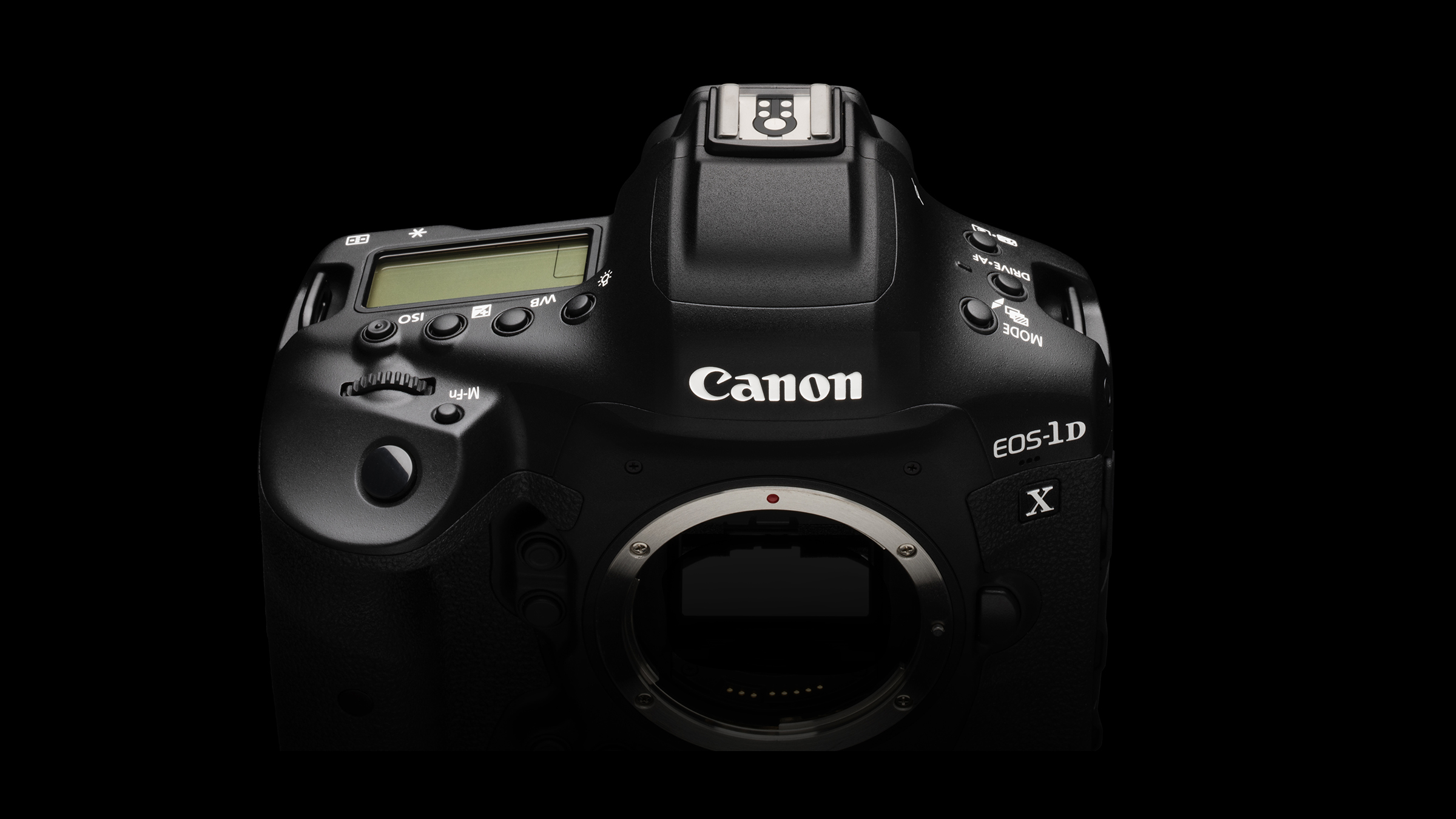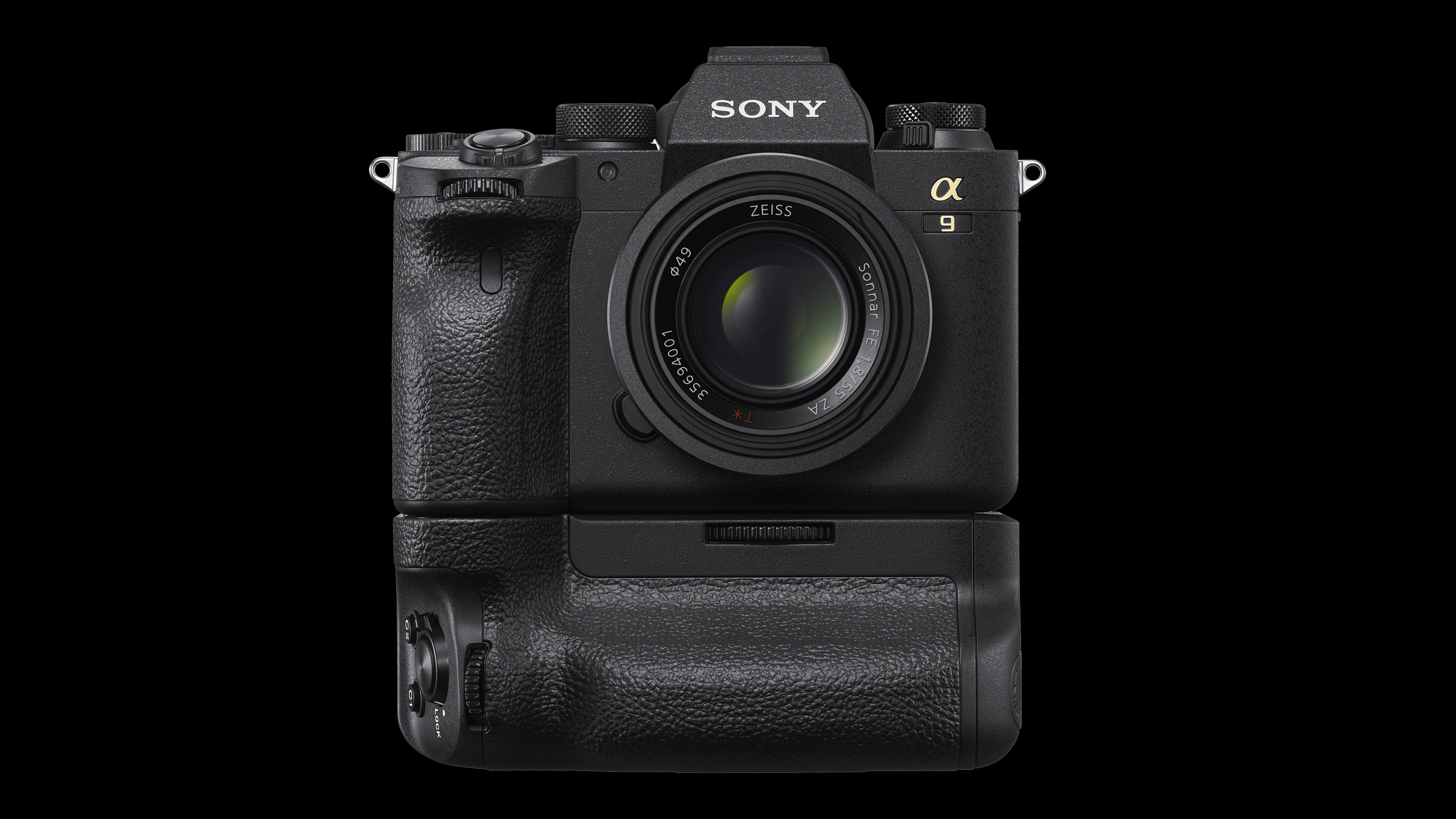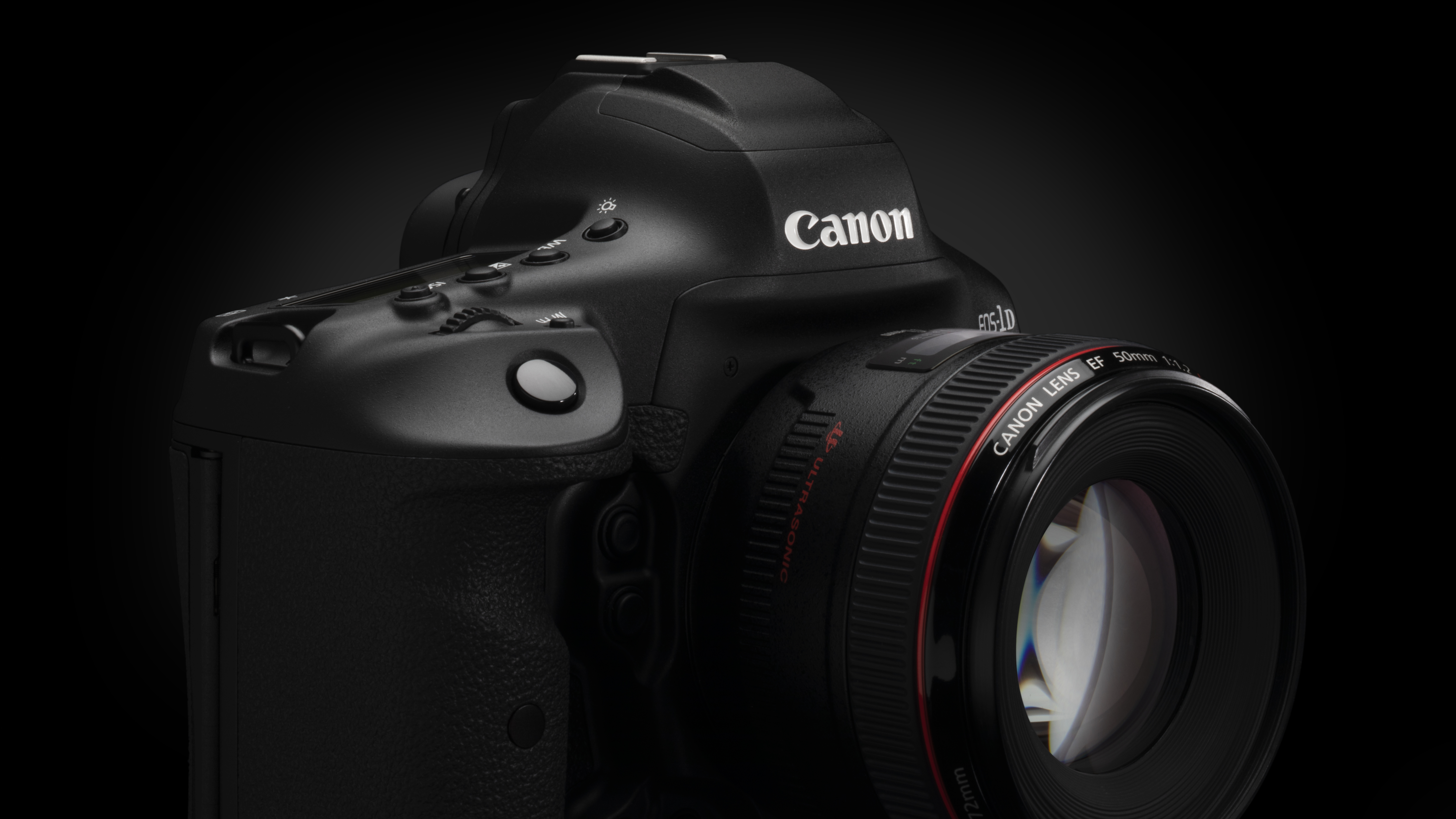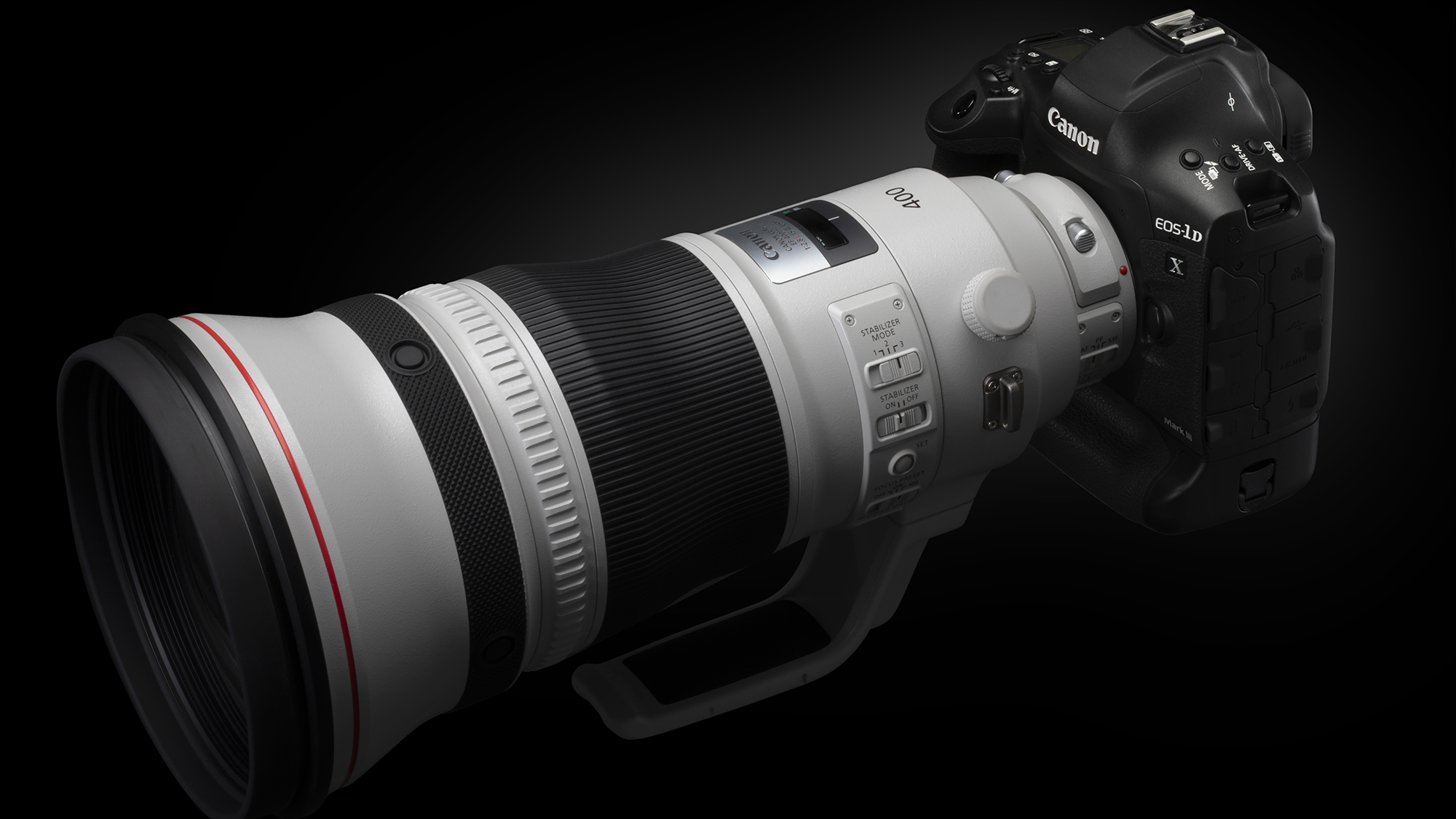Canon: why the 1DX Mark III is a DSLR rather than a mirrorless camera
Canon tells us why the DSLR is still very much relevant

The Canon 1DX Mark III, arguably the biggest camera story of CES 2020, is a bit of a conundrum. It's a cutting-edge professional sports camera, perhaps the most advanced ever made. And yet it also has a DSLR design that looks and feels pretty dated in this mirrorless age. So why has Canon stuck to DSLR tradition for a camera that, in every other way, feels like a glimpse of the future?
There are a few reasons, some of which Canon revealed to us during a pre-brief event for the 1DX Mark III in Marbella, Spain. Canon has long been in the classic incumbent position of needing to balance the needs of existing photographers, while attracting new ones with shiny innovation. And it certainly isn't stubbornly ignorant of the mirrorless benefits showcased by the likes of the Sony Alpha A9 II (below).

As Mike Burnhill, Professional Imaging Product Specialist for Canon Europe, told us: "One day technology will move on and yes, eventually mirrorless will be there for everybody. But there are pros and cons. We understand that you can see what you're going to take [with mirrorless EVFs]. You can apply your color profile, see in black and white, check the exposure, et cetera. And that's great for some photography," he said.
But the main reason why Canon has stuck with DSLR tech, at least for the 1DX Mark III, is the issue of viewfinder lag. "With sport, it's about speed, that moment. And electronic viewfinders have a lag. In SLR, you see everything in the speed of light. So what you see through the viewfinder is happening instantaneously. Through even the best mirrorless camera there is a lag," he said. "Light is saved into photons, goes into processor circuitry, to another processor, to a display and then to your eye. Therefore, there has to be a lag. You can never be as fast as an SLR," he added.
- We've already had the chance to check out Canon's new pro DSLR – read our hands-on Canon 1DX Mark III review

Shooting with both eyes
Of course, for many of us, that lag has been reduced to a more than acceptable level on the latest mirrorless cameras. And some professional sports photographers have switched to the likes of the Sony A9, citing the lack of viewfinder blackout on EVFs as an acceptable trade-off. But for Canon's EOS-1D series fans, who still dominate the sidelines at sports events, the optical viewfinder has other advantages that ensure the DSLR still rules.
As Mike Burnhill explained: "A lot of the sports guys, they'll actually shoot with two eyes. They'll shoot looking through the viewfinder, and they'll use their other eye as a wide field camera, so they can anticipate what's going to come into the frame," he said. "If you've ever tried wearing one sunglass lens or one contact lens, you know it's not a good thing for a long period of time. With an EVF you'll get different brightness, a lag, different refresh rate and with two eyes doing two different things, you won't get a comfortable feel. That's why many of these sports guys haven't gone to mirrorless. It doesn't work for the way they work," he added.

Rise of the DSLR-mirrorless hybrid
This is all very understandable for professional sports photographers. But doesn't it mean that DSLRs are already being reduced to serving an extremely small niche? Perhaps in the case of the 1DX Mark III, but new DSLRs like this and the Nikon D780 show that the near future might see the flourishing of DSLR-mirrorless hybrids, at least for those who still prize optical viewfinders.
Sign up for breaking news, reviews, opinion, top tech deals, and more.
These cameras still give the traditional benefits of DSLRs, like comfortable handling, swift autofocus at telephoto focal lengths, and long battery lives. The latter is particularly impressive on the 1DX Mark III – use the optical viewfinder, and you'll get an incredible 2,850 shots per charge, according to its industry standard CIPA rating.
Mike Burnhill said this improvement over the 1DX Mark II, which uses the same battery as its successor, comes down to a few factors: "This is things like the new processor, the new chip, new circuit board, new firmware that controls when things are turned on and turned off," he said. "It's about 2.3 times more [than the 1DX Mark II] under the CIPA standard, but in the real world, way more than that," he added.
But Canon has also built some cutting-edge mirrorless tech on top of the 1DX Mark III's DSLR foundation, including the ability to shoot 4K/60p or Raw video using the full width of its full-frame sensor. If you don't mind larger camera bodies, then it's a compelling formula that models like the Nikon D780 show can filter down to more affordable bodies.

The glass ceiling
There is one potential handbrake on the rise of new DSLR-mirrorless hybrids, though: lenses. The issue is both a lack of new glass, and the restrictions of things like slower autofocus motors on older lenses.
Talking about the 1DX Mark III, Mike Burnhill admitted: "One of the issues that Canon potentially is our legacy of lenses – it’s our strength, but there is also a weakness. With this body you can put a lens from 1987 onto it. And it works perfectly. But the focus motor won’t be as good," he said. Newer lenses will naturally work best, he added: "Anything from about 2012 onwards, that technology can keep up. Lenses before, the motors aren’t quite as efficient.”
Then there's the issue that Canon is now very much focused on developing its mirrorless-friendly RF lenses, rather the older EF ones supported by the likes of the 1DX Mark III. As Richard Shepherd, Pro Product Marketing Senior Manager of Canon Europe, said: "Of course, should the market demand it, we are ready to create new EF lenses. But for now, our focus is on RF.”
So it seems that DSLR-mirrorless hybrids like the Canon 1DX Mark III, while enticing options today for those who've built their photographic lives around optical viewfinders and DSLR lenses, certainly have a finite life. Cameras like the Canon 1DX Mark III and Nikon D6 will undoubtedly be behind most of the shots we see from the Tokyo 2020 Olympics – whether they're still around for Paris 2024, though, is another matter.
- Check out all of TechRadar's CES 2020 coverage. We're live in Las Vegas to bring you all the breaking tech news and launches, plus hands-on reviews of everything from 8K TVs and foldable displays to new phones, laptops and smart home gadgets.

Mark is TechRadar's Senior news editor. Having worked in tech journalism for a ludicrous 17 years, Mark is now attempting to break the world record for the number of camera bags hoarded by one person. He was previously Cameras Editor at both TechRadar and Trusted Reviews, Acting editor on Stuff.tv, as well as Features editor and Reviews editor on Stuff magazine. As a freelancer, he's contributed to titles including The Sunday Times, FourFourTwo and Arena. And in a former life, he also won The Daily Telegraph's Young Sportswriter of the Year. But that was before he discovered the strange joys of getting up at 4am for a photo shoot in London's Square Mile.